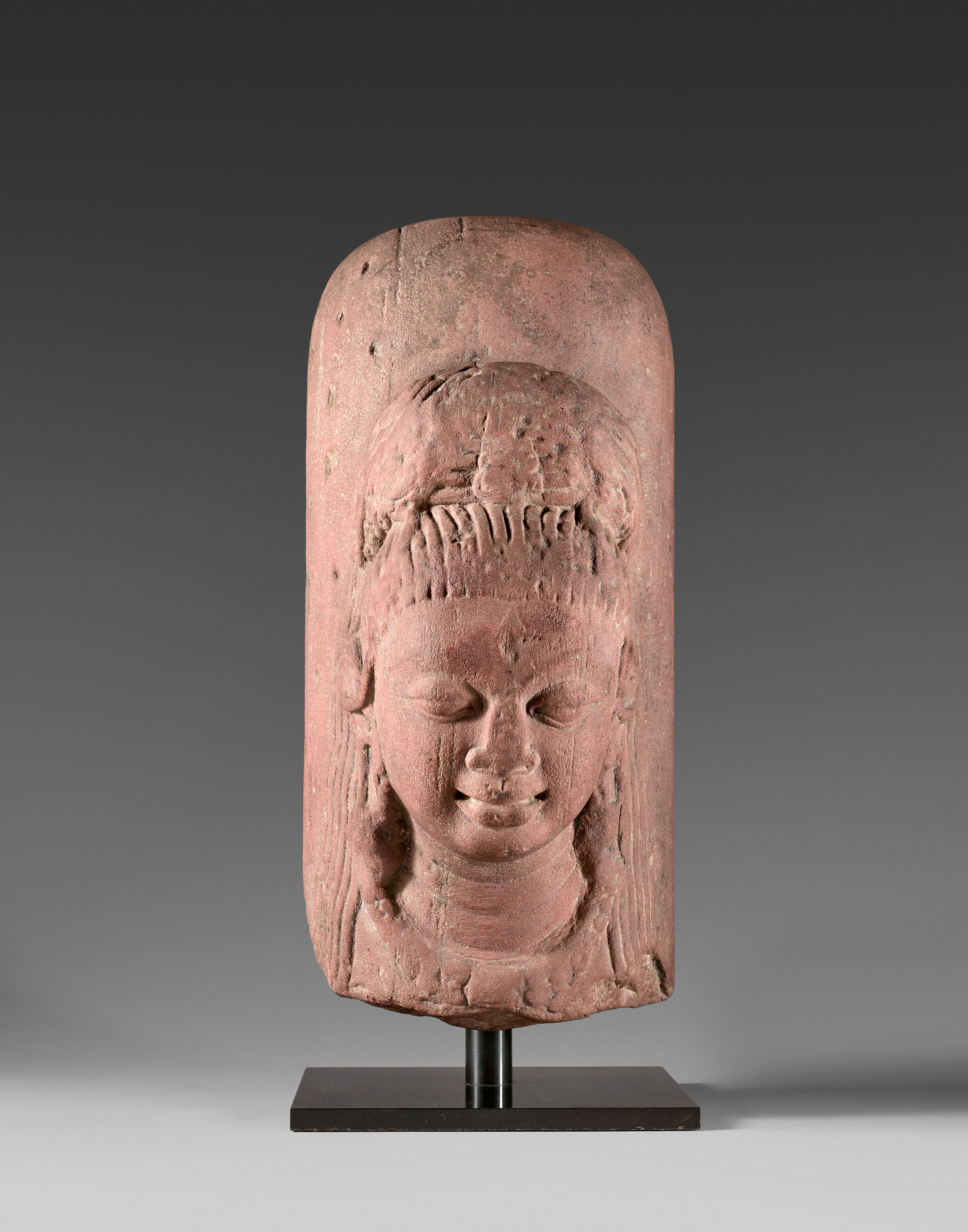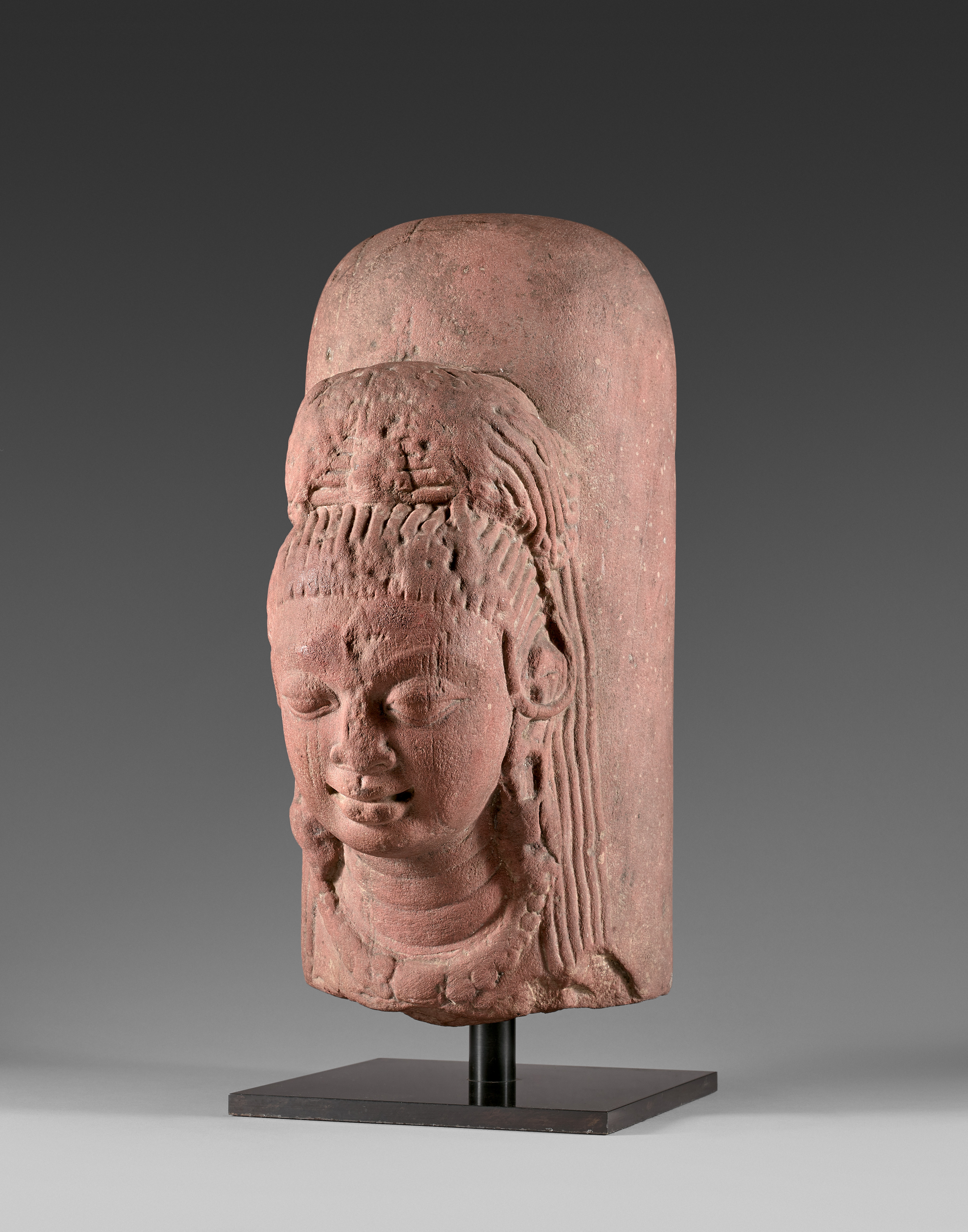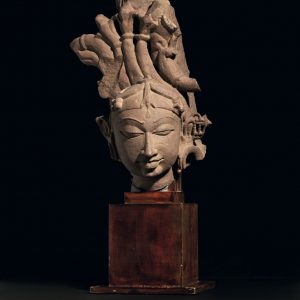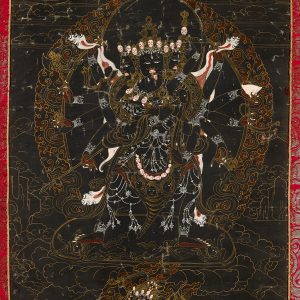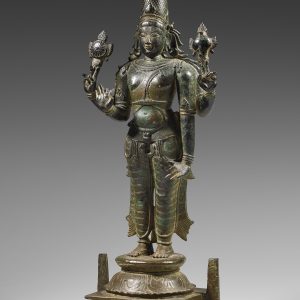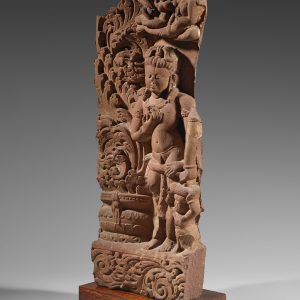Ekamukhaliṅgaṃ
Red sandstone
Northern India
Circa 5th century
H. 36 cm or 14 ⅛ in
Description
This remarkable Ekamukhaliṅgaṃ is an artwork with an essential and seductive iconography but also quite puzzling. Typical of the great Gupta period, this impressive sculpture of Northern India made of red sandstone is dated around the 5th century and is 36 cm high (or 14 ⅛ in).
Taking different forms (mūrti), the great Hindu god Śiva manifests itself here in his fundamental aspect, the liṅgaṃ. Cylindrical in shape, this is the phallic and stylized symbol of the god, and it embodies his vital force and creative power. This representation is here enriched by the face of the god (ekamukhaliṅgaṃ), appearing smiling and peaceful.
We find in this finely carved face the sweet humanity so valued in Gupta sculpture. The meditative expression is very present with great sensitivity in the treatment of the slightly prominent eyes, underlined by arched eyebrows and half-open eyelids, and in the smooth carving of the rather wide nose and fleshy lips. It is worth noting the beautiful definition of the braided hair strands brought back in a bun, the typical one of ascetics (jaṭāmukuṭa), some of whose braids fall back behind the ears adorned with rich jewels. Śiva’s third frontal eye is still visible, and he wears a necklace with large pearls that underline the graceful lines of the three beauty folds of the neck.
Installed in the innermost sanctum of a temple dedicated to Śiva, the liṅgaṃ was used primarily by Brahman priests who performed rituals in honor of the god as the ultimate creator of the world. Few liṅgaṃ from the Gupta period and of such quality have been preserved. It is interesting to compare this piece with a very similar one but slightly smaller in size and in a poorer condition, currently on display at the Rietberg Museum in Zurich (Inv.-Nr. RVI 111) and reproduced here. Another liṅgaṃ belongs to the collections of the Victoria & Albert Museum in London (IS.10-1969).
Provenance: Private collection, UK.

